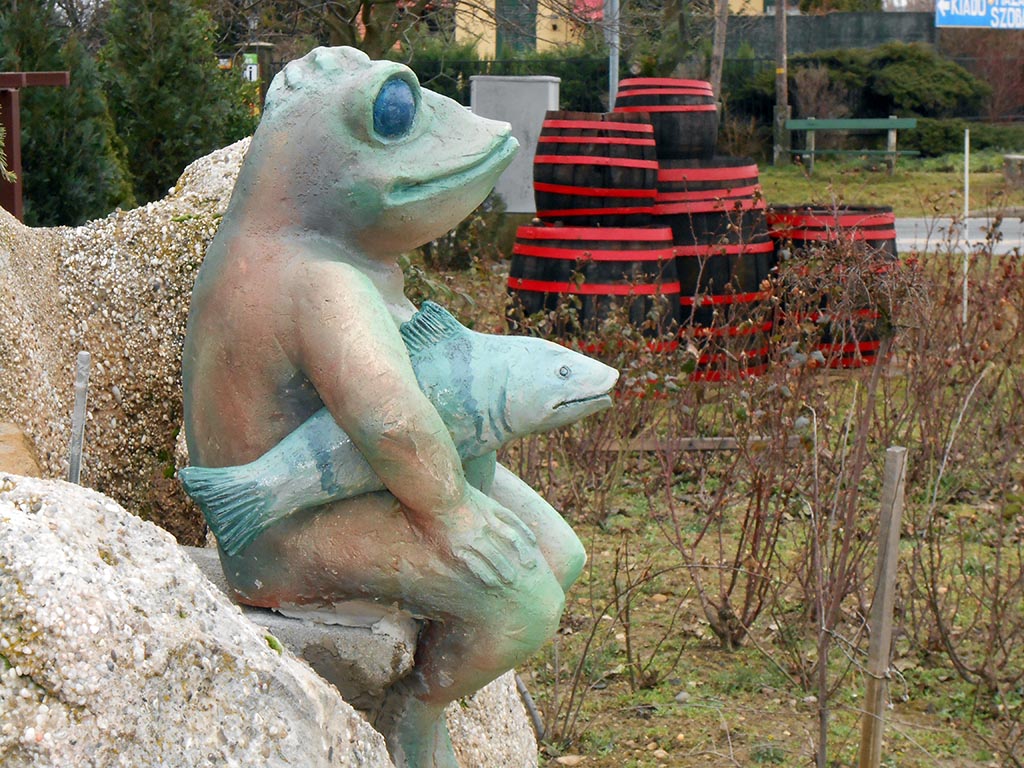[HU:] "Amikor az ember határozott cél felé tart...nagyon fontos, hogy az útnak is szenteljen figyelmet. Az út az, amely mindig megmutatja a célba érés legjobb módját, s útközben gazdagodunk. (...) Az lehet jobb vagy rosszabb, attól függően, melyik utat választjuk az eléréséhez, és hogy miképpen járjuk ezt az utat. Ezért olyan fontos ...felfedezni a titkokat mindabban, amit megszokásból, mindennap látunk, de amelyeket rutinból képtelenek vagyunk észrevenni."
Paulo Coelho fenti idézete motiválta ezt a geoláda sorozatot, amely sajátságos módon mutatja be Magyarországot. A megyénként elrejtett 26-26 láda csak a célt határozza meg, de a közöttük meghúzódó út megtalálása és az utazás az, aminek során felfedi igazi arcát az adott megye. Azért reméljük, hogy a megtalált ládák is felfednek eddig még nem ismert, "kiskincseket" az adott megyében.
A ládákban található négy karakteres jelszavakra a játék során szükséged lesz, ne felejts el megjegyezni azokat!
[EN:]"When you are moving toward an objective...It is very important to pay attention to the road. It is the road that teaches us the best way to get there, and the road enriches us as we walk its length. (...) It will turn out to be better or worse depending on the route you choose to reach it and the way you negotiate that route. That’s why...it extracts from what we are used to seeing every day the secrets that because of our routine, we never see."
Paulo Coelho's quote above motivated this geocache serie, which presents Hungary its own peculiar way. The 26-26 caches hidden in the counties only determines the goal, but the travel the road among them will reveal the true face of the given county. We hope that the found caches can reveal previously unknown, "little treasures" in a given county.
The four-character passwords in the geocaches are necessary in the game, do not forget remember them.

[HU:] Zánka
Zánka és környéke már az őskorban is lakott hely volt. Az ókorban a Balaton környéke Pannónia néven a rómaiak uralma alatt állt. Ezen időszakban Zánka is lakott hely volt, a református templomnál levő dombon e korból való leletek kerültek felszínre.
A mai Zánka Árpád-kori település. Nevét 1164-ben említette először oklevél, Miske ispán fia, István végrendeletében. A 12. században már kőtemploma is volt, mely ma is áll.
A török hódoltság alatt a környék is sokat szenvedett: 1548-ban a törökök Zánkát is felégették. A falu az 1696-os adóösszeírásban már nem szerepelt, puszta lett.
1736-ban Diskay Ádám és Sebestyén Ádám német református telepesekkel telepítette újra Zánkát. A falu a 19. század elejére elmagyarosodott.
Az úttörőváros hivatalos átadásra 1971. május 25-én, a Nemzetközi Gyermeknapon került sor. A rendszerváltás idején, az állami tulajdonú, "nemzeti gyermekintézmény" válságos időket élt át. 2013-tól Zánka-Új Nemzedék Központ Nonprofit Közhasznú Kft. néven szolgálja a magyar gyermek- és ifjúsági turizmus, oktatás és sport ügyét.
[EN:] Zánka
Zan is an ancient Hungarian personal name, and the original name of the settlement. The diminutive suffix -ka was added later.
Zánka has been inhabited since Roman times. Its settlement was most likely due to good agricultural conditions. In the 12th century, the first version of what is today the Calvinist church was built in the old village; both the village and its church are mentioned in the chronicles between 1333-1335. A charter from 1519 mentions that the church's patron was Saint Stephen, King of Hungary. During the Ottoman Wars, the village lost a majority of its population, which had been primarily Catholic. When it was repopulated, most of the new inhabitants were Calvinist, resulting in the destroyed church's subsequent reconstruction and use by that denomination, though this later changed; in 1786 both Calvinist and Lutheranian religion used the same church.
A vacationing center for youths was built during the communist regime a few kilometers from the town, mostly used for light indoctrination.
Forrás/Source: Wikipedia